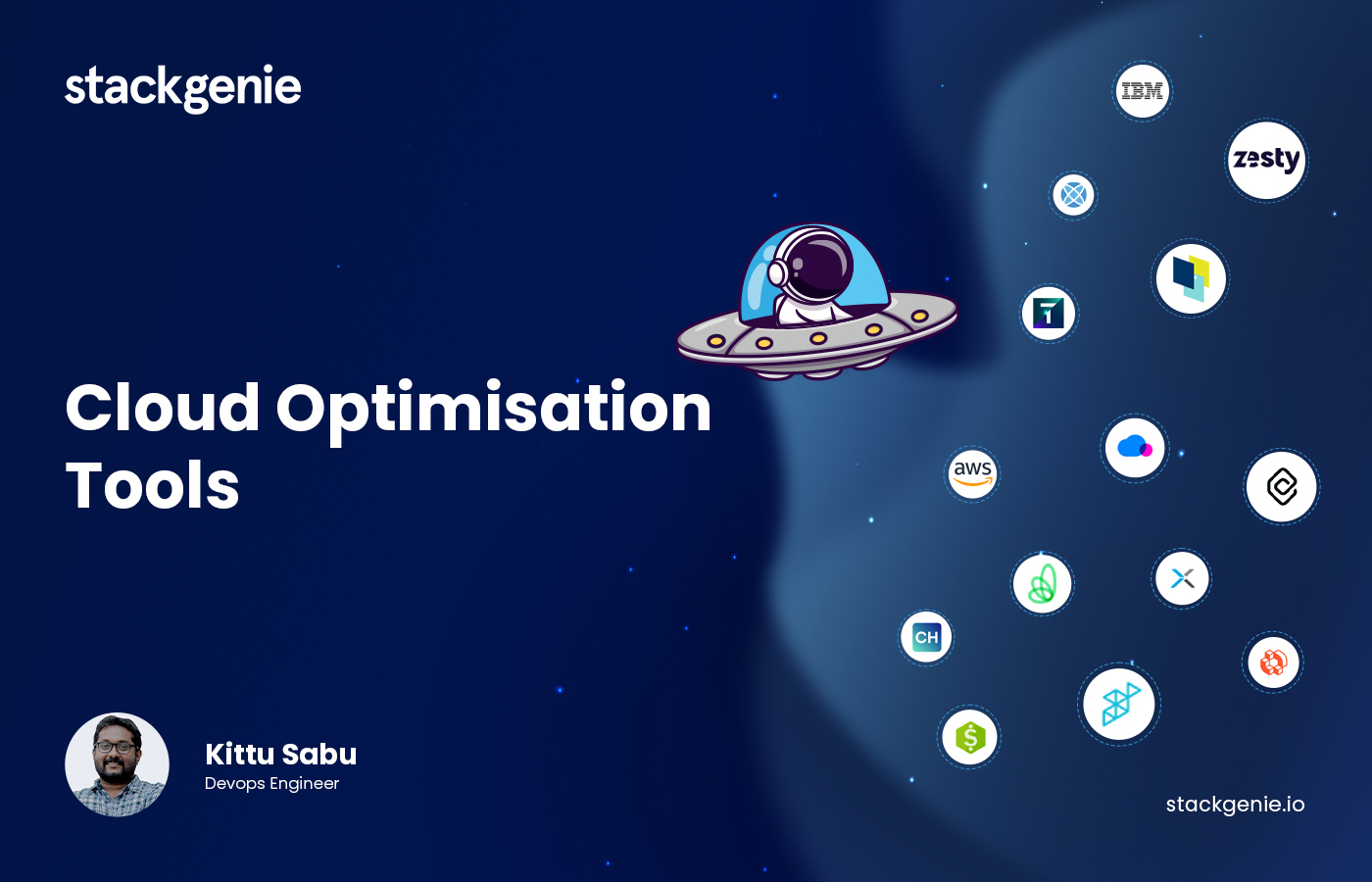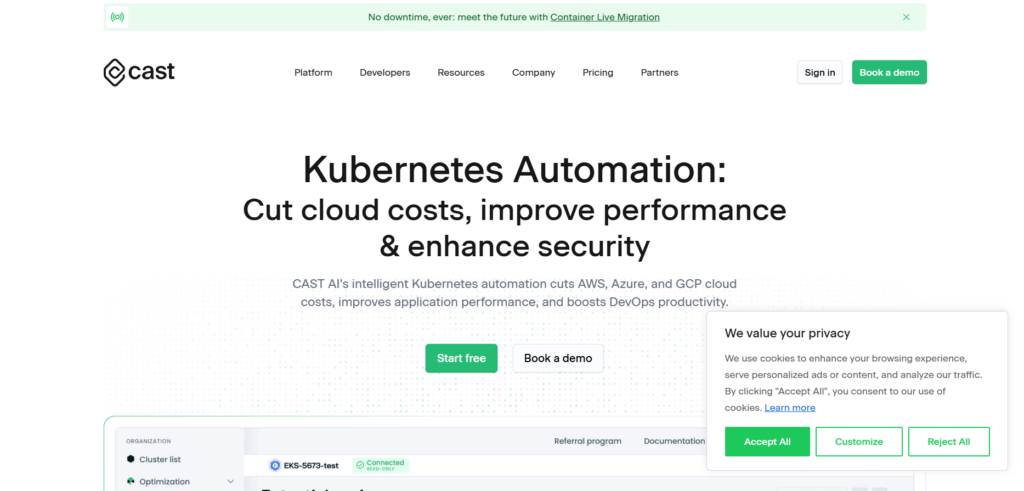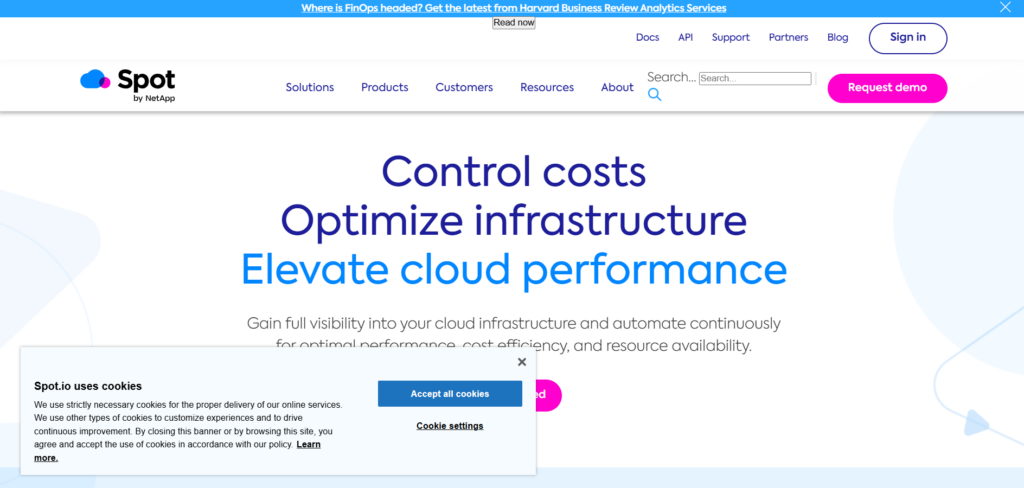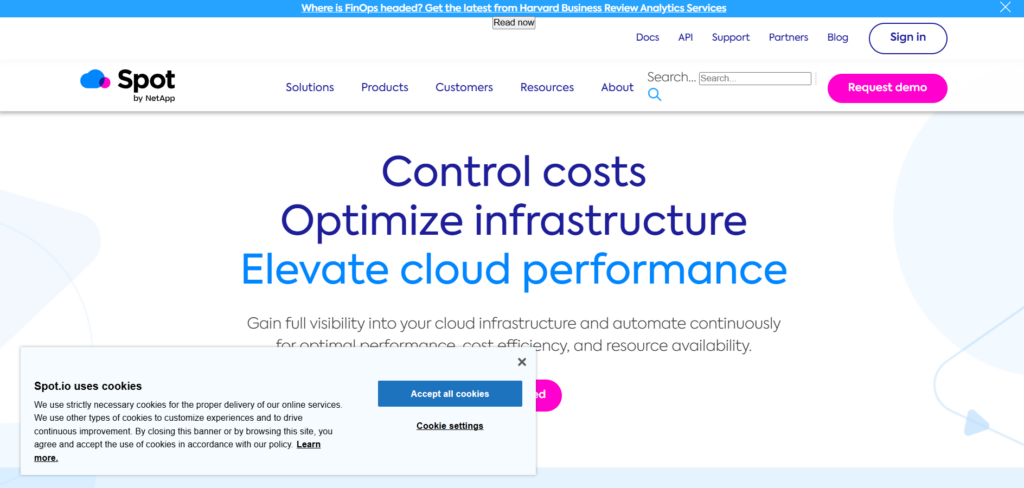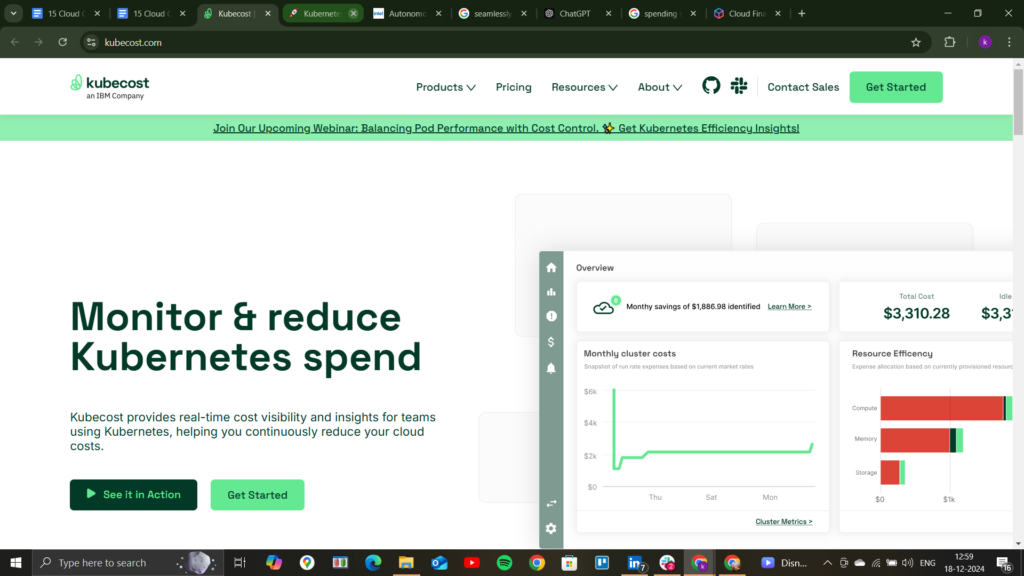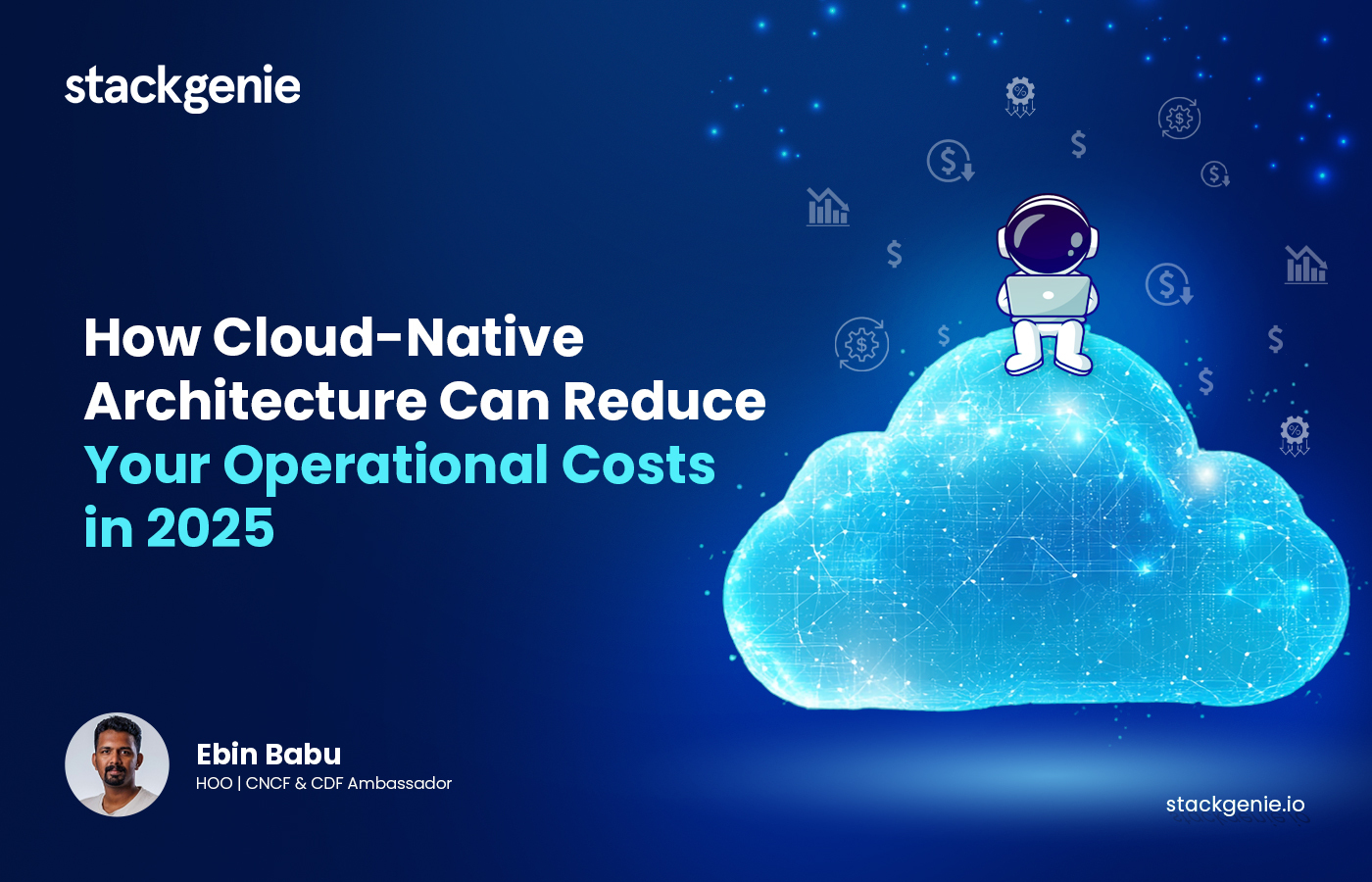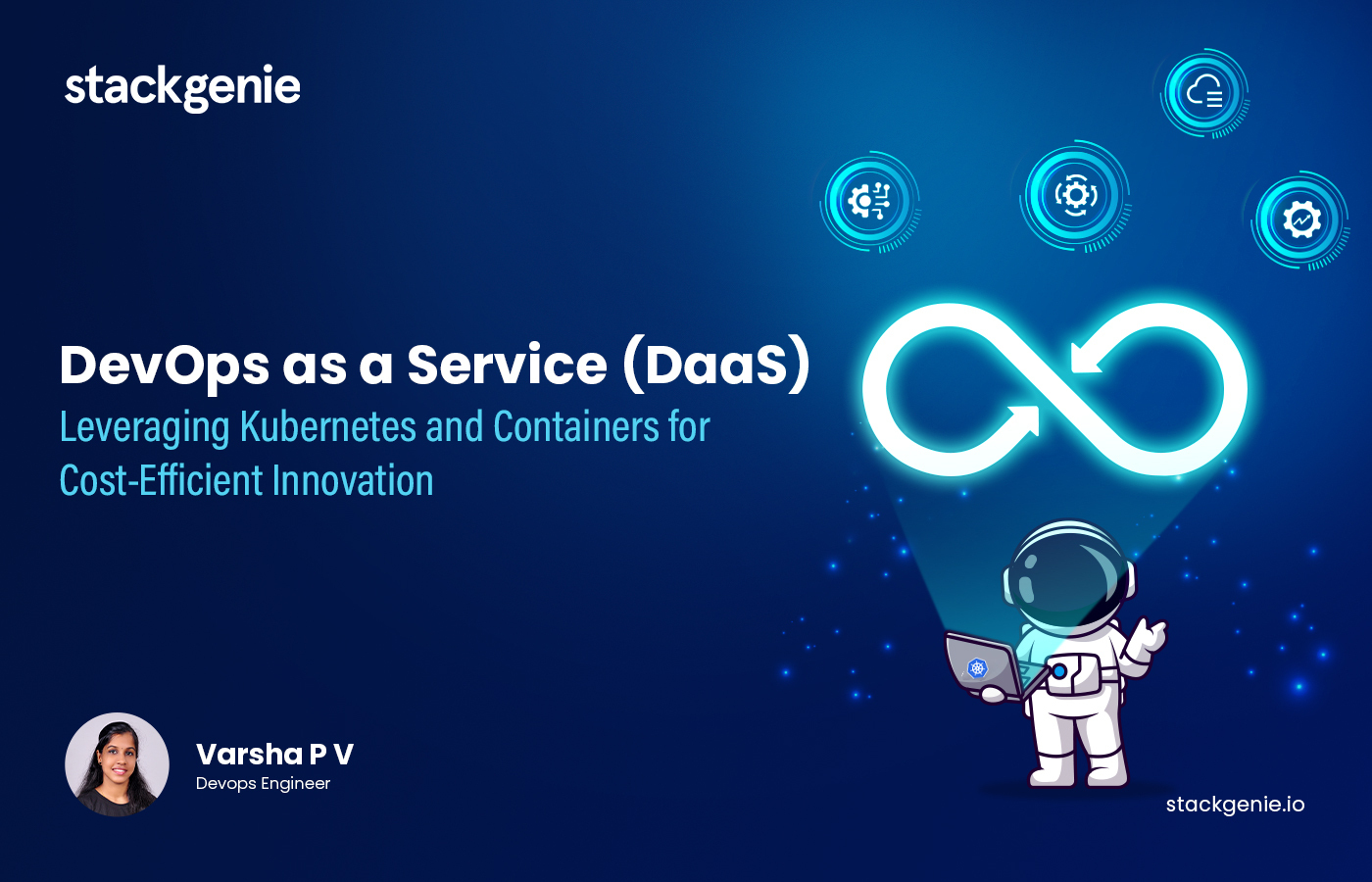Inside this article :
Cloud cost optimization tools are crucial for businesses trying to manage their cloud budgets, but the sheer number of options can be overwhelming. Cloud services involving resources like storage, computing power, data transfer, tracking, and control costs have become complex.
Cloud optimization tools provide powerful features, ranging from detecting unused resources to offering machine learning-based predictive insights. However, their variety of approaches can make it challenging for companies to decide where to start.
The solution lies in selecting the right tool to optimize costs without sacrificing performance, ultimately turning cloud budgeting from a headache into an aligned process. In this blog, we will discuss the 14 best cloud cost optimization tools for your digital business environment.
14 Best Cloud Cost Optimization Tools
Let us explore the top cloud cost optimization tools that can help your business manage and reduce its cloud spending without compromising performance.
1. Densify
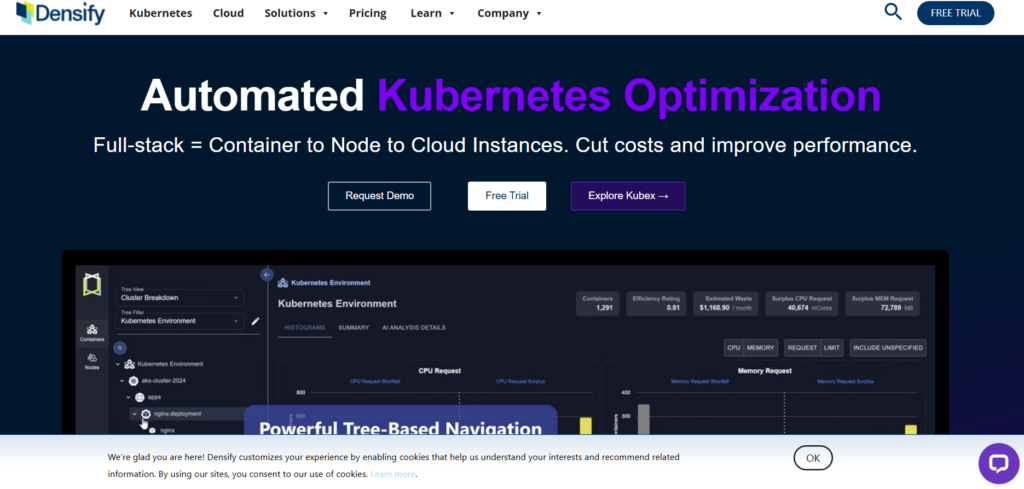 Densify helps determine the most effective use and allocation of cloud resources. It specializes in analyzing workload patterns to configure the optimal cloud setup for your business infrastructure.
Densify helps determine the most effective use and allocation of cloud resources. It specializes in analyzing workload patterns to configure the optimal cloud setup for your business infrastructure.
Key features:
- Help prevent overspending by analyzing and optimizing cloud resource allocation.
- Automatically adjusts resource allocation based on real-time and predictive analytics to prevent over-provisioning or underutilization.
- Enables organizations to enforce cost-saving and performance policies across teams and workloads.
Powered by Intel, it is also known as Intel Cost Optimizer for cloud platforms. With its powerful machine learning capabilities, Densify performs deep workload analysis, allowing you to integrate the most suitable cloud applications and services into your infrastructure efficiently.
2. Azure Cost Management+Billing
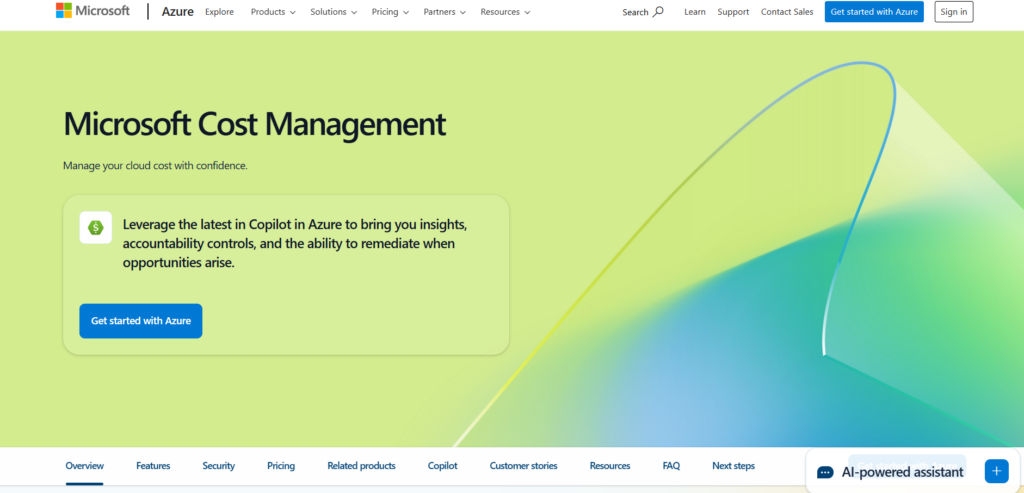 Azure Cost Management + Billing is the tool Microsoft offers to help manage cloud costs within Azure. It includes key features like cost analysis, budgeting, and personalized cost optimization recommendations, all based on best practices for Azure.
Azure Cost Management + Billing is the tool Microsoft offers to help manage cloud costs within Azure. It includes key features like cost analysis, budgeting, and personalized cost optimization recommendations, all based on best practices for Azure.
Key features:
- Helps businesses monitor, allocate, and optimize Azure cloud spending
- Can manage both Azure and AWS billing data when combined
- Features AI-powered cost anomaly detection
- Offers budgeting alerts to stay within limits
- Integrates with services like Azure Advisor for personalized recommendations
Azure Cost Management also integrates with Power BI and APIs for customized cost management. These features help businesses boost revenue using the best cloud cost optimization tools and implement efficient practices through enhanced visibility and forecasting.
3. Flexera
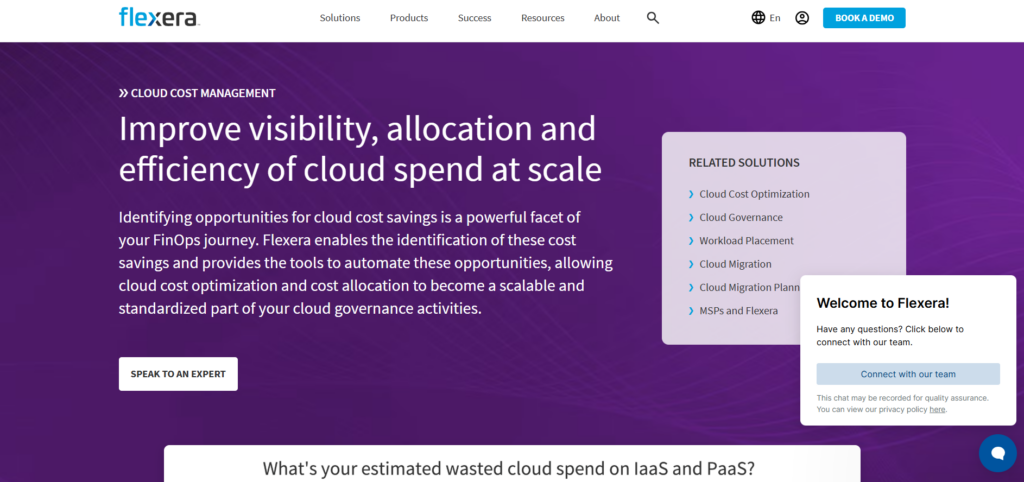 Flexera helps businesses gain better visibility and control over their cloud spending, aiming to improve efficiency at scale. It provides standard recommendations for budget control features, offering multi-cloud analysis to track spending and policies to reduce unexpected cloud costs.
Flexera helps businesses gain better visibility and control over their cloud spending, aiming to improve efficiency at scale. It provides standard recommendations for budget control features, offering multi-cloud analysis to track spending and policies to reduce unexpected cloud costs.
Flexera makes it easier to act on cost-saving recommendations, allowing businesses to manage cloud governance more effectively.
Key features:
- Combines costs from different cloud providers into one dashboard.
- Assign expenses to specific teams or projects for better tracking.
- Helps identify security risks and ensure compliance.
- Provides actionable insights to reduce unnecessary spending.
Flexera also offers cost allocation by cost center and team, suggested budget alerts, and in-depth visibility into private and public clouds.
4. Cast.ai
Cast.ai is an all-in-one Kubernetes optimization tool with cost-optimization features. It leverages AI to manage your Kubernetes clusters efficiently and ensures they are optimally configured to match your business infrastructure.
Key features:
- Delivers actionable insights for cluster hibernation, rightsizing, and rebalancing to minimize cloud expenses.
- Automates cluster management tasks, ensuring resources are used efficiently without manual intervention.
- Works with Kubernetes services like EKS, AKS, GKE, KoPs, and OpenShift for a versatile, multi-cloud experience.
Cast.ai also clarifies cost visibility and reporting, allowing teams to track Kubernetes expenses easily. The tool is specially configured for AWS environments and ensures businesses running Kubernetes on AWS or other platforms can save costs without sacrificing performance, withholding optimal security monitoring.
Features like dynamic scaling and continuous optimization allow Cast.ai to simplify Kubernetes management while controlling costs.
5. Spot by NetApp
Spot by NetApp (formerly Spot.io) automates cloud infrastructure deployment and management with a focus on cost efficiency and reliability.
Recently, Spot.io bolstered its cloud cost management capabilities by acquiring CloudCheckr, further strengthening its toolset.
Key features:
- The Cloud Billing Engine tool allows you to generate invoices based on policy-driven rules. You can also use chargeback and showback to allocate costs to different departments or teams, helping you track the progress of your cloud budget.
- The Cost Reporting feature helps you aggregate cloud spending data and share it with stakeholders like finance, FinOps, and the DevOps team, providing transparency in your cloud expenditures.
- Spot Eco is a commitment management tool that automates the purchase, management, and optimization of reserved commitments on AWS and Microsoft Azure, helping you save costs long-term.
Spot uses machine learning to analyze rapid cloud resource allocation, identifying opportunities for cost savings and automatically scaling workloads across cloud providers. While the platform excels in automating cloud cost control, it has some limitations, such as the lack of real-time pricing data and resource scheduling guidelines.
6. CloudHealth
VMware Tanzu CloudHealth is an all-in-one platform that helps businesses manage cloud costs, usage, performance, and security through a unified interface. Acquired by VMware, it offers powerful tools for optimizing cloud spending, improving efficiency, and supporting multi-cloud environments.
Key features:
- Enable businesses to track and allocate cloud costs effectively, promoting team accountability.
- Provides actionable insights for forecasting future cloud expenses based on usage patterns.
- Identifies underutilized or oversized resources to ensure optimal cloud resource allocation.
- Helps businesses understand and project future costs for better financial planning.
- Pinpoints and eliminates unnecessary cloud expenses to maximize cost efficiency.
CloudHealth supports multi-cloud cost management across providers like AWS, Azure, GCP, and Alibaba Cloud. Its automated cost optimization feature detects idle resources and suggests cost-saving actions. However, some users suggest its reporting features lack customization and granularity.
7. Zesty
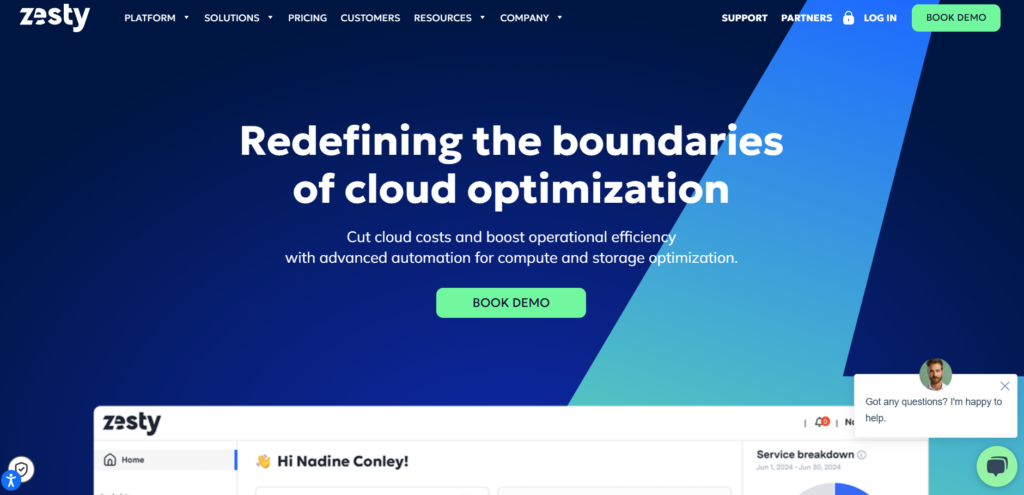 Zesty is an automated tool designed to allocate resources based on dynamic application demands. It instantly optimizes performance by adjusting resource allocation, preventing business downtime during peak session hours.
Zesty is an automated tool designed to allocate resources based on dynamic application demands. It instantly optimizes performance by adjusting resource allocation, preventing business downtime during peak session hours.
Key features:
- Automatically adjusts CPU and storage based on application requirements.
- Handles unexpected spikes in activity to avoid application outages.
- Uses AI to predict exact cloud resources, including CPU and storage.
- Guarantees availability by reserving EC2 instances during peak business hours.
- Features like Zesty Commitment Manager and Dynamic Disk Adjustment help minimize cloud expenses.
Currently available for AWS users, Zesty helps businesses optimize cloud resources and effortlessly reduce unnecessary expenses.
8. IBM Turbonomic
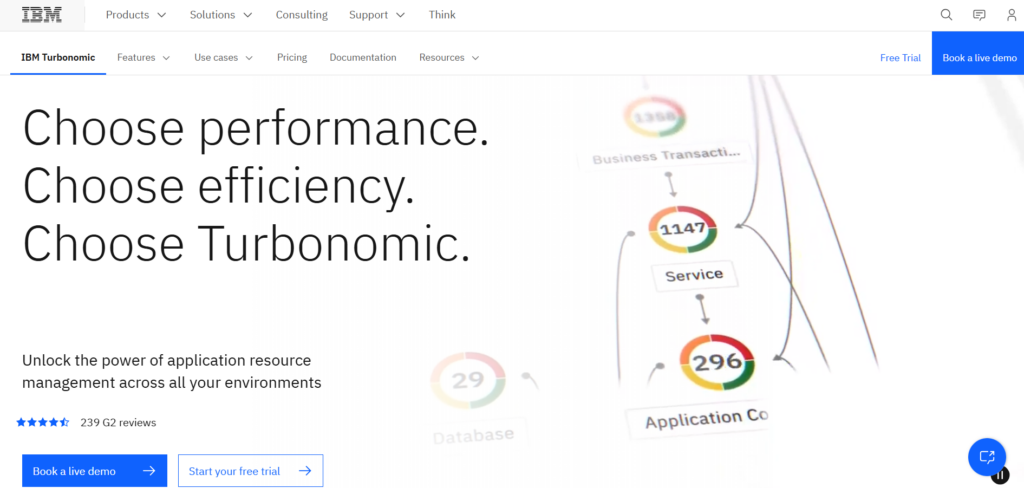 Turbonomic is an AI-powered cloud optimization tool that constantly automates resource management across the cloud environment’s computing, storage, and network layers.
Turbonomic is an AI-powered cloud optimization tool that constantly automates resource management across the cloud environment’s computing, storage, and network layers.
Key features:
- The tool automatically manages application performance by adjusting resources based on demand and uses data to train AI for smarter future decisions.
- The new version includes a Grafana-based dashboard for better reporting and visualization.
- It offers a comprehensive view of system interactions, helping make cost-effective resource allocation decisions.
Turbonomic offers actionable insights into cloud resource usage, such as discovering idle resources, rightsizing opportunities, and increasing discounts. It supports AWS, Azure, and GCP and integrates with existing infrastructure.
You can use its machine learning capabilities to automate scaling decisions, ensuring optimal performance and cost-efficiency. This makes it an ideal solution for businesses looking to streamline cloud operations while maintaining compliance and performance goals.
9. Granulate
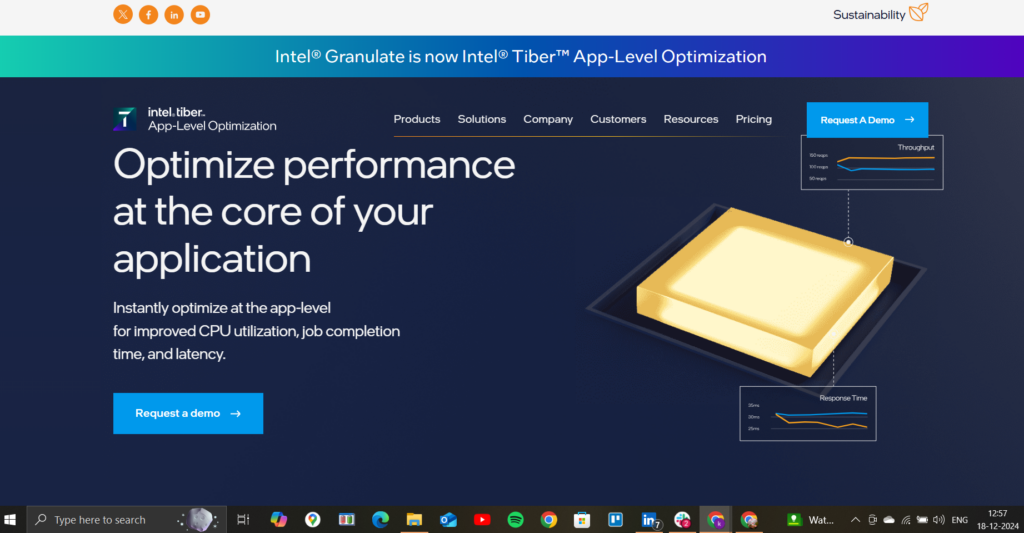 Granulate is a real-time, AI-powered tool that boosts your infrastructure. Its lightweight agent integrates into your cloud environment, making deployment fast and simple for your business applications.
Granulate is a real-time, AI-powered tool that boosts your infrastructure. Its lightweight agent integrates into your cloud environment, making deployment fast and simple for your business applications.
Granulate’s advanced machine learning capabilities customize workload performance by reducing latency, improving resource allocation, and minimizing cloud costs. Granulate provides automated actionable insights to ensure businesses only pay for what they need.
Key features:
- Adjusts dynamic workloads to prevent resource wastage for computing and storage.
- Ensures faster setup without requiring code changes.
- Businesses can save up to 60% on cloud costs through its predictive and automated processes.
Granulate is ideal for businesses operating in dynamic, multi-cloud, or hybrid environments that require cost-efficient solutions without sacrificing scalability or performance.
10. CloudZero
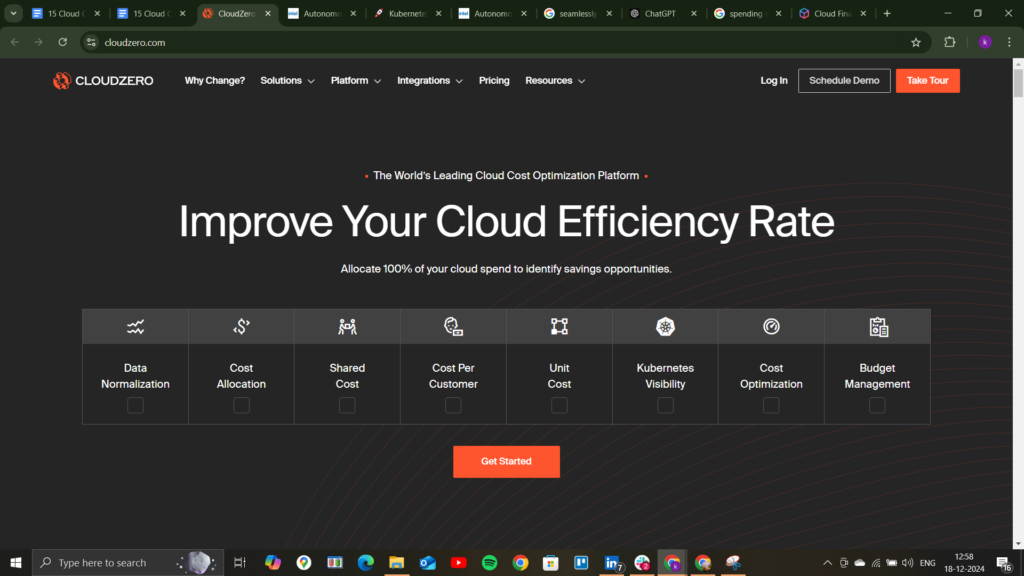 CloudZero analyzes each aspect of your cloud spending, which is more than what an ordinary cloud cost optimization tool can do for you. It provides a single dashboard for all your cloud costs from AWS, GCP, Kubernetes, Azure, Oracle Cloud, Datadog, Snowflake, MongoDB, etc.
CloudZero analyzes each aspect of your cloud spending, which is more than what an ordinary cloud cost optimization tool can do for you. It provides a single dashboard for all your cloud costs from AWS, GCP, Kubernetes, Azure, Oracle Cloud, Datadog, Snowflake, MongoDB, etc.
Key features:
- Combines cost data from multiple platforms into a single, easy-to-use interface.
- Breaks down costs by customer, feature, team, project, configuration, or environment, offering detailed insights.
- Continuously tracks cloud expenses to help businesses stay on budget and address cost anomalies instantly.
With CloudZero, businesses can optimize 100% of their cloud spend, saving money while maintaining performance and driving ROI faster.
11. Yotascale
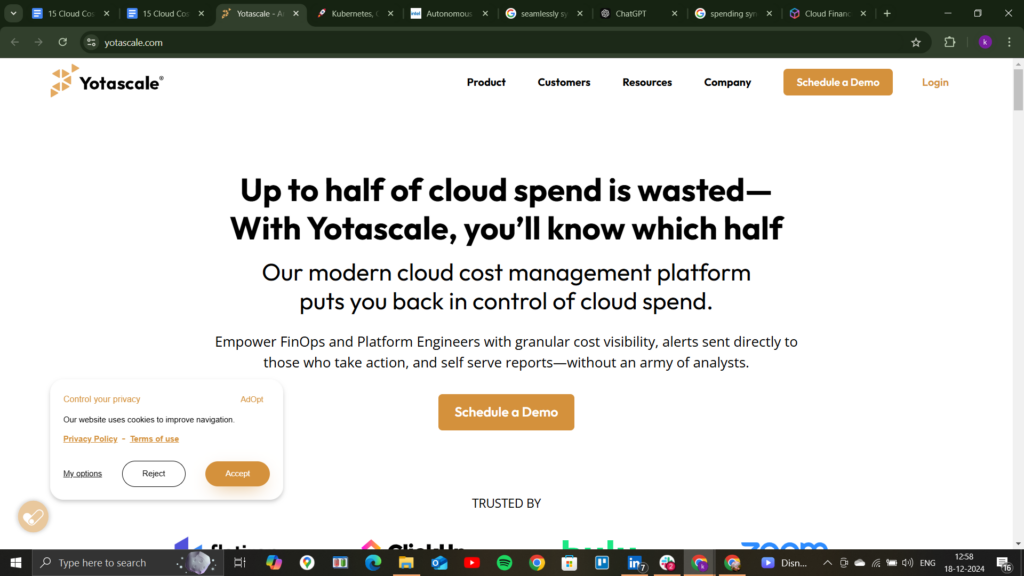 Yotascale is specifically engineered to manage complex, multi-cloud environments, offering a detailed understanding of your cloud resource allocation. It delivers a detailed breakdown of cloud usage by team, product, application, and service.
Yotascale is specifically engineered to manage complex, multi-cloud environments, offering a detailed understanding of your cloud resource allocation. It delivers a detailed breakdown of cloud usage by team, product, application, and service.
Key features:
- Commitment Discount Management feature helps maximize savings by managing reserved instances and savings plan discounts.
- Automatically assigns cloud costs to the appropriate teams or services for accurate reporting.
- Identifies unusual spending patterns to prevent unexpected budget overruns.
Yotascale also simplifies the process of identifying and tagging untagged resources, automating label management to maintain organized cloud environments. It optimizes cloud costs efficiently for businesses experiencing rapid growth, offering customizable cost settings and tools for proactive budget adjustments.
12. Kubecost
Kubecost is a user-friendly platform engineered to help business owners easily monitor and manage their Kubernetes (K8s) cluster costs. It provides real-time insights into your spending, making it simple to understand where your money is going.
One of the most helpful aspects of Kubecost is its ability to break down costs in ways that make sense for your business. Whether you want to view expenses by service, deployment, or namespace, Kubecost gives you the clarity needed to identify high-cost areas.
Key features:
- Provides up-to-date visibility into your Kubernetes costs across clusters, making it easy to track spending.
- Offers tailored suggestions to reduce waste and improve resource efficiency.
- Helps you stay within budget by assigning costs to specific teams or projects and notifying you of potential overspending.
Kubecost also provides features like cost allocation, budget alerts, and resource usage insights, allowing you to optimize your cloud resources while maintaining performance and keeping costs under control.
13. AWS Cloud Financial Management Tools
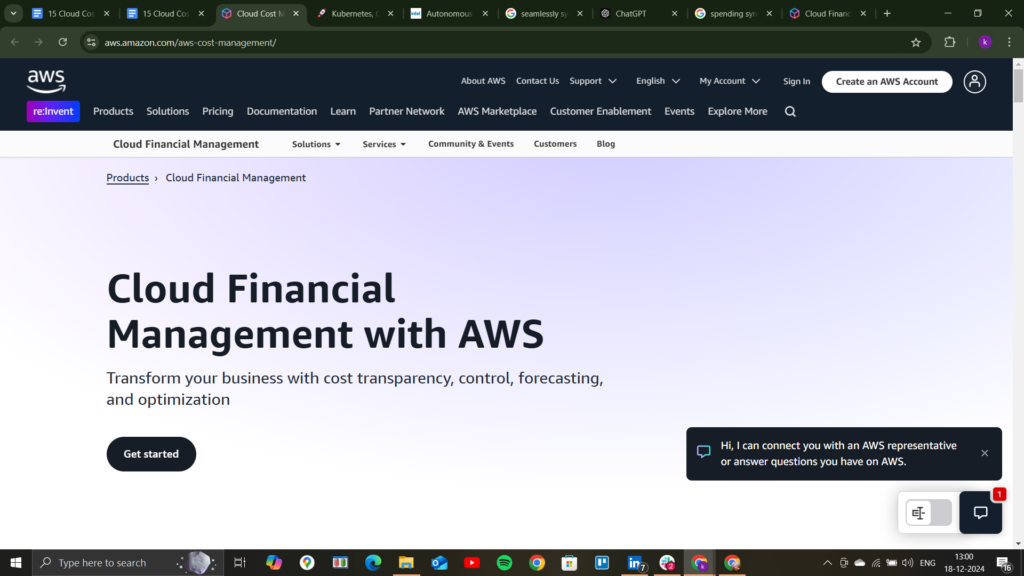
AWS offers a comprehensive suite of tools designed to optimize costs, streamline budgeting, and enhance cost transparency. These tools enable businesses to understand their spending better, identify savings opportunities, and ensure efficient use of resources.
Key Features:
- Consolidated Billing: Simplifies managing multiple AWS accounts by combining billing into one.
- AWS Cost Explorer: Provides detailed insights into spending trends, helping you identify cost-saving opportunities.
- AWS Budgets: Allows you to set spending limits and receive alerts to prevent budget overruns.
- AWS Trusted Advisor: Delivers tailored recommendations to optimize costs, improve performance, and enhance security.
- Cost Allocation Tags: Helps track expenses by department or project, clarifying where money is being spent.
- AWS Reserved Instances: Offers discounted rates for committing upfront to specific services.
- AWS Cost Anomaly Detection: Uses smart technology to detect unusual cost spikes, allowing swift resolution.
Beyond these key features, AWS provides additional solutions like the Cloud Value Framework, Pricing Calculator, and Billing Conductor, enabling businesses to take full control of their cloud spending.
Together, these tools empower organizations to efficiently manage costs, minimize waste, and achieve significant savings while maximizing the value of their AWS investment.
14. Xosphere
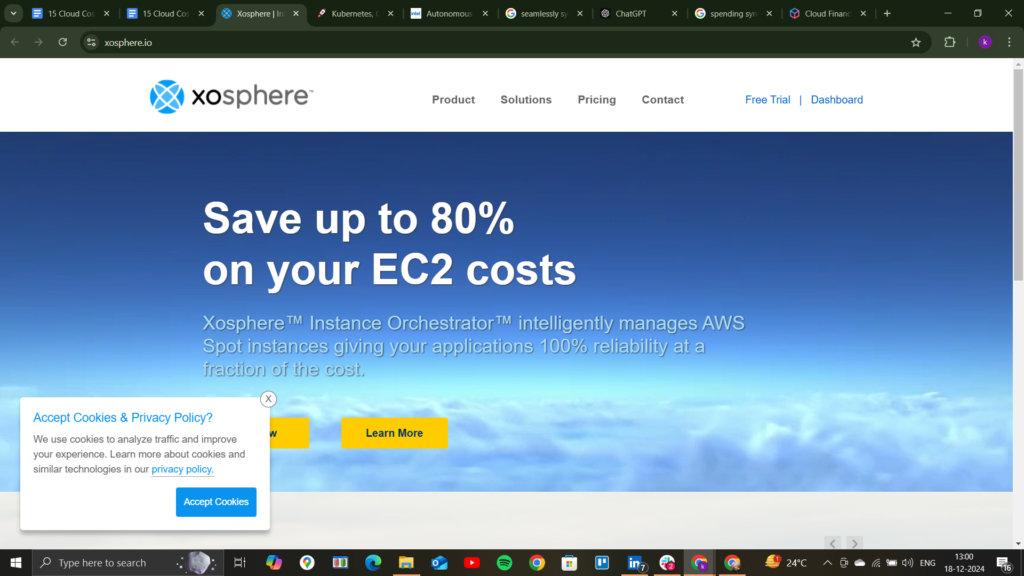 Xosphere is a powerful cloud cost management platform that helps businesses optimize spending across multi-cloud environments. It provides deep insights into resource allocation, enabling cost-effective management across AWS, Azure, GCP, and other cloud platforms.
Xosphere is a powerful cloud cost management platform that helps businesses optimize spending across multi-cloud environments. It provides deep insights into resource allocation, enabling cost-effective management across AWS, Azure, GCP, and other cloud platforms.
Key Features:
- Track spending by teams, departments, services, or projects to comprehensively view cloud resource usage.
- Seamlessly switch between on-demand and Spot instances to maximize cost savings while ensuring application availability.
- Actionable optimization recommendations to improve resource usage and reduce unnecessary costs.
- Automatic cost allocation to specific teams, applications, and resources for better visibility and transparency.
With Xosphere, businesses can efficiently optimize cloud costs, allocate resources effectively, and maintain performance.
Leverage Cloud Cost Optimization Tools to Manage Cloud Spending
Cloud cost optimization tools help organizations optimize cloud budgets by identifying cloud inefficiencies, enabling smarter resource allocation, and reducing unnecessary costs. It showcases you with insights to pay for what you need rather than what you will have using any of these tools.
Finding the right “cloud expense tracking” tool that aligns with your business needs and budget considerations is important to thrive on savings. Stackgenie’s cloud cost optimization services can help you efficiently manage and optimize your cloud resources, ensuring long-term cost reduction and improved efficiency.
Choose the correct cloud cost optimization tool to take control of your cloud budget today. Email us at [email protected] with your next cloud infrastructure project. Stackgenie offers the best resources and team at your disposal to help you configure your cloud environment.
FAQs
How can businesses calculate the ROI of investing in cloud cost optimization tools?
To calculate the ROI of cloud cost optimization tools, businesses should compare the cost of the tool with the savings generated through optimization. Start by analyzing your current cloud spend, then estimate potential savings from the tool’s features, such as rightsizing, idle resource detection, or workload rebalancing.
Are cloud cost optimization tools suitable for businesses using hybrid cloud environments?
Yes, cloud cost optimization tools are highly beneficial for businesses with hybrid cloud environments. These tools can analyze and optimize both on-premises and cloud resources, ensuring that your cloud and on-premise services are used efficiently.
By providing visibility and optimization recommendations across the entire infrastructure, they help reduce costs, streamline resource allocation, and ensure that hybrid cloud environments operate at peak efficiency.
How do cloud cost optimization tools help businesses achieve long-term savings?
Cloud cost optimization tools help businesses achieve long-term savings by continuously monitoring cloud usage and making real-time adjustments. These tools can automate processes like scaling resources, identifying underused instances, and recommending cost-effective options like reserved instances or spot pricing.
Over time, as the tool optimizes cloud resources, businesses can significantly reduce their cloud spending while maintaining or improving performance, leading to substantial long-term savings.
